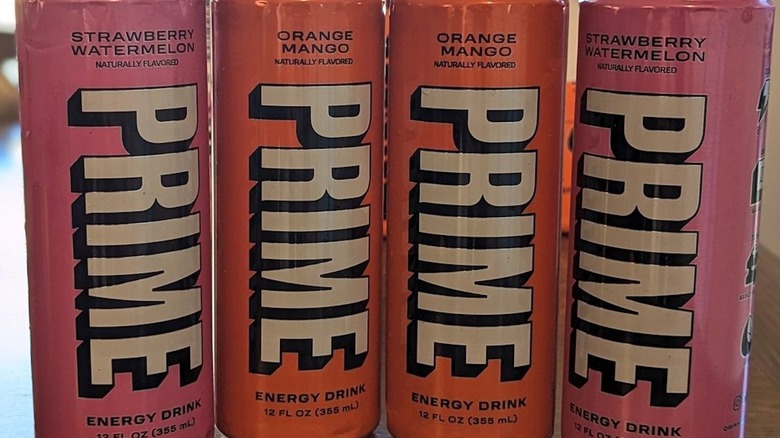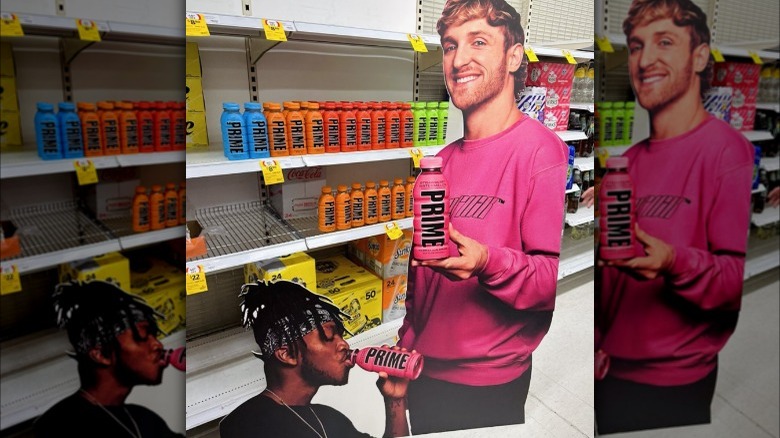A Popular New Energy Drink Is Now Banned In Schools Due To Off-The-Charts Caffeine Content
Sometimes the thirst for a particular beverage can be about the hype surrounding the can. When Prime launched its Super Bowl commercial, the chant of "We Want Prime" by its spokespeople — Logan Paul and KSI — raised awareness about the official UFC beverage. It has now become a battle call between kids who want to pop open a can and the schools who refuse to let them.
According to Yahoo News, some schools have banned the beverage. In response, KSI tweeted a reference to a school notification stating the repercussions for bringing the banned beverage on campus. It appears that the reasoning for the school ban is the high caffeine levels in brand's offering. Some reports state that one can of Prime Energy has almost double the amount of other brands like Monster Energy and Red Bull.
Given that the Columbia University Irving Medical Center asserts that energy drinks should not be consumed by children under the age of 17, the schools appear to be using their policy measures to restrict the beverage on campus. While parents and administrators have debated these types of food policies, the rationale is the limitation is in the best interest of the students' health, welfare, and safety. Whether the kids want this beverage for the caffeine or the celebrity endorsement is unclear. For now, kids can chant for Prime Energy, but their thirst for the influencer-driven beverage could go unquenched.
How much caffeine does Prime Energy have compared to other energy drinks?
While Logan Paul and KSI might have started the battle cry of "We Want Prime," the thirst for a satisfying energy drink is not necessarily a new one. The shelf is crowded with popular brands like Red Bull, Ghost, and Monster Energy. Although the celebrity endorsement may push some consumers to choose a ZOA Energy over a C4, the reality is that lots of people choose a product for the caffeine content. The U.S. Food and Drug Administration considers 400 milligrams, which is about two cups of coffee a day, acceptable for adults. The Prime Energy website states that it has 200 milligrams of caffeine per 12-ounce can.
Kill Cliff states that it has 150 milligrams of caffeine per 12-ounce can, while ZOA Energy has 160 milligrams per 16-ounce can. Men's Health reports that Prime Energy has nearly double the caffeine compared to Monster and Red Bull. While all those numbers are meaningful, the same article quoted Kansas City Chiefs sports dietician Leslie Bonci, who said that caffeine is not a source of energy but a stimulant. While it can give a boost, the impact will be gone once it is metabolized. That feeling is often referred to as the caffeine crash.
The hype surrounding Prime Energy may spark people to try a sip, but be cautious. After all, a boost of caffeine might be great in the moment, but it can have a lingering impact — and not in a good way.

